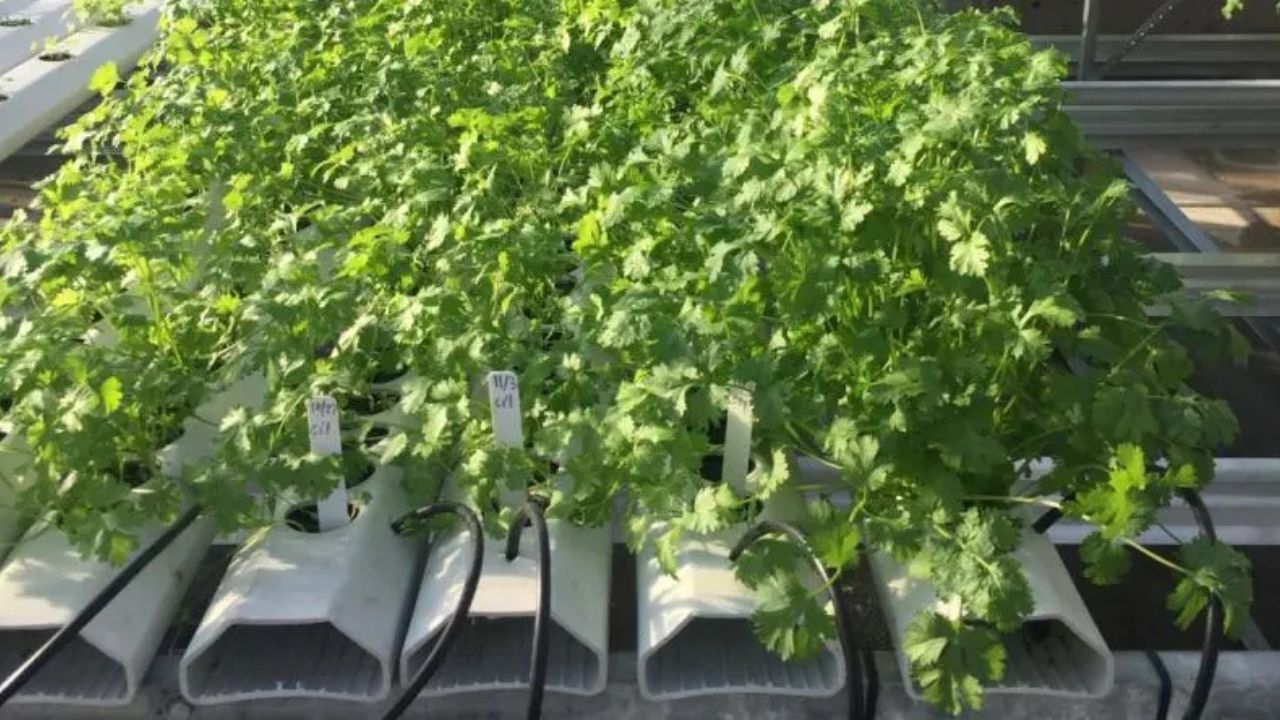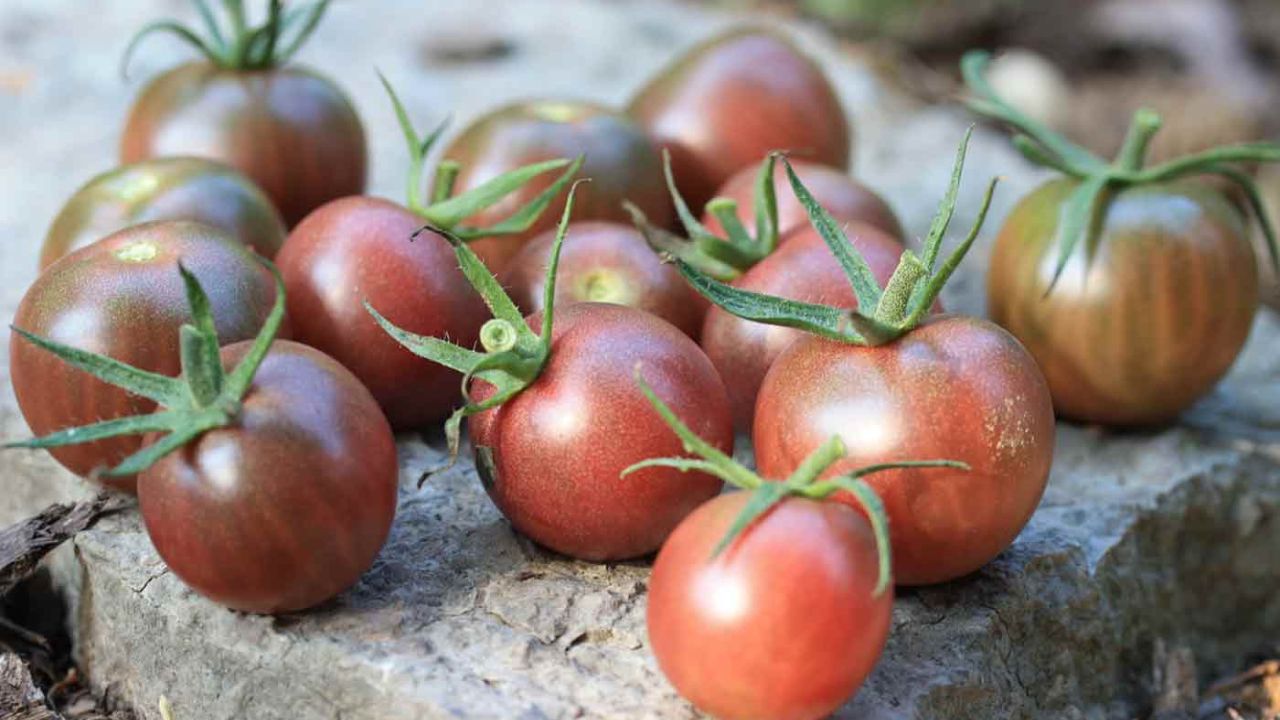Hydroponics is a space-saving and efficient way to grow cilantro, offering faster growth and controlled conditions compared to soil. This guide covers the essentials for sprouting cilantro seeds hydroponically, ensuring a fresh and flavorful harvest.
Why Choose Hydroponics for Growing Cilantro?
Cilantro, also known as coriander, is a popular herb cherished for its vibrant flavor and culinary versatility. While traditionally grown in soil, hydroponics offers a modern, efficient, and sustainable way to cultivate this aromatic herb.
Here’s why hydroponics is an excellent choice for growing cilantro:
The Advantages to to Choose Hydroponics:
Space-Saving Solution
Hydroponics is ideal for gardeners with limited space. Unlike traditional soil-based gardening, hydroponic systems are compact and can be set up indoors or in small outdoor areas.
Vertical hydroponic systems, in particular, allow you to grow multiple plants in a small footprint, making it perfect for urban dwellers or those without access to a garden.
Imagine harvesting fresh cilantro from your kitchen counter or balcony—it’s that convenient!
Faster Growth
Hydroponic cilantro grows faster than its soil-grown counterparts. In a hydroponic system, plants receive a perfectly balanced mix of nutrients directly to their roots, eliminating the need for them to expend energy searching for resources.
This efficient nutrient delivery accelerates growth, allowing you to harvest cilantro within 3-4 weeks compared to the longer timeline in soil.
This quicker turnaround means you can enjoy a continuous supply of fresh cilantro for your culinary creations.
Controlled Environment
One of the standout benefits of hydroponics is the level of control it offers. Factors like water, nutrients, pH levels, and light can be precisely managed to create an optimal growing environment for cilantro.
This controlled approach eliminates common soil-related issues such as pests, diseases, and inconsistent nutrient availability. Additionally, hydroponic systems use significantly less water than traditional gardening, making them an eco-friendly option.
Hydroponics vs. Traditional Soil-Based Methods
While soil gardening has been the go-to method for centuries, hydroponics is revolutionizing how we grow plants. Here’s how they compare:
| Aspect | Hydroponics | Soil-Based Gardening |
| Space Required | Minimal; can be set up indoors | Requires outdoor space or pots |
| Growth Speed | Faster due to direct nutrient delivery | Slower as plants search for nutrients |
| Water Usage | Up to 90% less water used | Higher water consumption |
| Pests/Diseases | Minimal risk in controlled environments | Prone to pests and soil-borne diseases |
| Maintenance | Regular pH and nutrient checks | Requires weeding and soil preparation |
Essential Supplies for Sprouting Cilantro Seeds
Sprouting cilantro seeds hydroponically is a straightforward and rewarding process, but it requires the right tools and materials to ensure success.
Below is a list of essential supplies to help you get started, along with explanations for each item to make the process easy and efficient.
Cilantro Seeds (Organic/Non-GMO)
Choose high-quality cilantro seeds, preferably organic or non-GMO, to ensure healthy growth and optimal flavor. Organic seeds are free from harmful chemicals, making them ideal for homegrown herbs. You can find these seeds at gardening stores or online.
Hydroponic System
The type of hydroponic system you choose plays a significant role in how your cilantro grows. Here are two beginner-friendly options:
- Kratky Method: A passive system requiring no pumps, making it cost-effective and low-maintenance. Perfect for small-scale indoor setups.
- Deep Water Culture (DWC): This method uses a container filled with nutrient-rich water and an air pump to oxygenate the roots, ensuring faster and healthier growth.
Both methods are suitable for growing cilantro, so pick the one that aligns with your setup and experience level.
Growing Medium
Since hydroponics doesn’t use soil, you’ll need a growing medium to support your cilantro seeds. Popular options include:
- Rockwool: A lightweight, porous material that retains water and provides excellent aeration.
- Coconut Coir: Made from coconut husks, this eco-friendly medium is great for retaining moisture and nutrients.
Both options are easy to use and widely available at gardening stores.
Nutrient Solution
In hydroponics, plants rely entirely on nutrient solutions for their growth. These solutions provide essential minerals like nitrogen, phosphorus, and potassium. Look for a hydroponic nutrient mix specifically designed for herbs and leafy greens.
Pro Tip: Follow the manufacturer’s instructions for mixing the solution and avoid overfeeding your plants, as this can harm their growth.
pH Testing Kit and Water
Maintaining the correct pH level is critical for cilantro’s growth in a hydroponic system. Cilantro thrives in a pH range of 6.0 to 6.5. Use a pH testing kit to monitor and adjust the pH of your nutrient solution as needed.
For best results, use distilled or filtered water to prevent mineral buildup and ensure the nutrient solution remains balanced.
How to Sprout Cilantro Seeds Hydroponically?
There we will provide you all information and a detailed guide to sprouting Cilantro seeds hydroponically in simple and understandable steps.
Step 1: Preparing the Seeds
To ensure successful germination, it’s essential to prepare your cilantro seeds properly. Cilantro seeds are actually two seeds enclosed in a single shell. Splitting or lightly crushing the seeds can speed up the germination process.
Next, soak the seeds in warm water for 12-24 hours. This step softens the seed coat, allowing water to penetrate and activate germination more effectively. After soaking, drain the seeds and pat them dry with a paper towel. Now, they’re ready for planting!
Step 2: Setting Up the Hydroponic System
A well-prepared hydroponic system sets the foundation for healthy cilantro growth. Follow these steps:
1. Setting Up the Container or Tray
- Choose a container or tray suitable for your hydroponic system, such as a Kratky or DWC setup.
- Ensure the container is clean and opaque to prevent algae growth.
- Place your chosen growing medium (e.g., Rockwool cubes) into the container or net pots.
2. Adding the Nutrient Solution
- Prepare the nutrient solution according to the manufacturer’s instructions, ensuring the correct concentration for leafy greens.
- Check the pH level and adjust it to the ideal range of 6.0-6.5.
- Fill the container with the nutrient solution so it touches the bottom of the growing medium without over-saturating it.
Step 3: Planting the Seeds
- Place the prepared cilantro seeds onto the growing medium. For Rockwool cubes, insert the seeds into the pre-drilled holes.
- Cover the seeds lightly with a thin layer of the growing medium to provide darkness, which aids germination.
- Mist the surface with water to keep it moist, but avoid overwatering.
Once planted, place the container in a warm, dark location until the seeds germinate, which usually takes 7-10 days.
Step 4: Managing Light and Temperature
After germination, your cilantro plants need adequate light and the right temperature to thrive.
Ideal Temperature:
- Maintain a temperature range of 65-75°F for optimal growth.
- Avoid placing the setup near drafts or heat sources that could cause temperature fluctuations.
Lighting Conditions:
- Cilantro requires 12-14 hours of light per day.
- If you’re growing indoors, invest in full-spectrum grow lights to mimic natural sunlight. Position the lights 6-12 inches above the plants to prevent burning.
Pro Tip: Use a timer for grow lights to ensure consistent light exposure.
Step 5: Maintaining the System
Regular maintenance is crucial to keep your hydroponic cilantro healthy and thriving.
- Check pH Levels: Test the pH of the nutrient solution every few days and adjust as necessary.
- Monitor Nutrient Levels: Replenish the nutrient solution weekly to ensure the plants receive sufficient nourishment.
- Inspect for Issues: Keep an eye out for signs of yellowing leaves or stunted growth, which may indicate nutrient imbalances or system issues.
Step 6: Harvesting Cilantro
Cilantro is ready for harvest when it reaches 4-6 inches in height, usually within 3-4 weeks after germination.
How to Harvest:
- Use scissors or a sharp knife to cut the outer leaves first, leaving the inner leaves to continue growing.
- Harvest up to one-third of the plant at a time to ensure continuous growth.
Common Mistakes to Avoid
Avoid these key mistakes when growing cilantro hydroponically:
- Overwatering or Underwatering: Overwatering can lead to root rot, while underwatering causes stunted growth. Keep the growing medium moist but not soaked.
- Improper pH Levels: Cilantro thrives in a pH range of 6.0-6.5. Regularly test and adjust the pH to ensure proper nutrient absorption.
- Low-Quality Seeds or Nutrients: Use organic or non-GMO seeds and hydroponic-specific nutrient solutions for optimal growth.
Related Questions People Often Ask:
How Long Does Cilantro Take To Grow in Hydroponics?
Cilantro seeds germinate in 7-10 days, and you can start harvesting within 3-4 weeks.
Can Cilantro Grow Without Sunlight?
Yes, cilantro can thrive indoors under artificial grow lights, which provide the necessary 12-14 hours of light daily.
Is Hydroponically Grown Cilantro As Flavorful As Soil-grown?
Yes, and often even more aromatic, thanks to the precise control of nutrients and growing conditions.
Overall Reflection
Hydroponics offers a fast, efficient, and space-saving way to sprout cilantro, with precise control over growth conditions. By following simple steps, you can harvest fresh cilantro in just a few weeks, making it perfect for gardeners of all levels.




